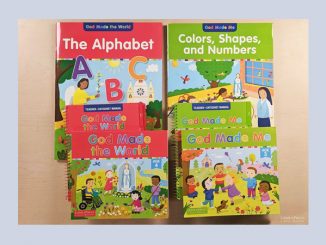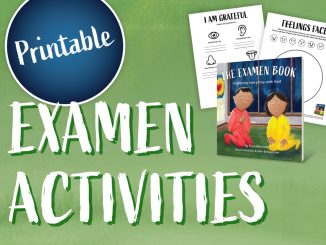
One of the hallmarks of Ignatian prayer and spirituality is, of course, the Daily Examen—a prayerful way to review your day to recognize God’s presence and movement in your everyday life. We tend to think of this prayer as an adult exercise; however, many catechists and school teachers have found that this prayer is easily adaptable to children and can serve as a great tool for introducing young people to the contemplative aspect of our spiritual lives. But what about children as young as 4–6 years of age? Are they capable of learning, praying, and benefitting from the Examen prayer? The answer is, Yes!
Children between the ages of 4 and 6 display the following characteristics, all of which make the Examen a suitable prayer experience for them.
- They have an attention span of about 10 minutes.
- They can listen and follow directions.
- They learn well through experience.
- They have a growing sense of identity and self-worth.
- They can understand that God desires their response of love for him and others.
- They already have a wealth of human experiences.
- They can learn that, as friends of Jesus, they are called to act as he did.
- They can recognize that their actions affect others.
- They can learn that prayer builds a relationship with God.
- They can learn that they can talk and listen to God anytime and anywhere.
The Daily Examen for children ages 4–6 should, of course, be kept simple. Here’s how one might go about leading an Examen for very young children.
Introduce the activity by having children share examples of good habits such as teeth-brushing, hand-washing, picking up toys, and saying “please” and “thank you.”
Say: We are going to learn a way of praying that is another example of a good habit. You can use this way of praying every evening to have a quick talk with God. You can share with God the best parts of your day, and with his help, you can promise to try harder tomorrow.
Say: St. Ignatius of Loyola gave us a way to pray each day. It is called the Examen. The Examen includes steps to follow at the end of each day to think about what we did and the choices we made. We use what we did today to plan for tomorrow.
Let’s begin. (Pause.)
Be still and quiet. (Pause.) Know that God is with you. (Pause.)
Think about your day from beginning until now. (Pause.)
Did you make good choices? (Pause.)
Did you sin? (Pause.)
Think about how much God loves you. (Pause.)
Know that God forgives you when you sin. (Pause.)
Ask for God’s forgiveness. (Pause.)
Thank God for his gifts. (Pause.)
Think of ways that God can help you tomorrow. (Pause.)
In essence, there are five easy steps to praying the Daily Examen.
- Know that God is with me. I look at my day with God’s eyes, not just my own.
- Give thanks. I am thankful for the day I have just lived. It is a gift from God.
- Review my day. I think about my day from the beginning until now.
- Think about my choices. Did I make good choices today? Did I sin? I ask for God’s forgiveness.
- Think of ways God can help me tomorrow.
For more information about how to use the Examen for children ages 4–6 and for other ideas about resources for faith formation for this age group, contact your Loyola Press Educational Consultant, who will be happy to assist you.





I do teach in the same way you are explaining. Yes, children in grade 4 do need to be doing their lessons as we are teaching. Kathy and myself review the weeks before lesson. Thank you Bernadette from St. Michael the Archangel, Hudson Fl.
This is so beautiful. Thank you so much for sharing. I plan to do this with my kids.